



Table of Contents
- Introduction
- Advantages of SPC Flooring
- Disadvantages of SPC Flooring
- Features of SPC Flooring
- Types of SPC Flooring
- SPC Plank Flooring
- SPC Tile Flooring
- SPC Sheet Flooring
- Luxury Vinyl Plank (LVP)
- Heavy-Duty SPC Flooring
- How is SPC Flooring Different From WPC Flooring
- Maintenance of SPC Flooring
- Conclusion
- Faq's
Introduction
SPC flooring, or Stone Plastic Composite flooring, is a cutting-edge flooring solution that has rapidly gained traction in the Indian market. This innovative product combines limestone powder (approximately 60%), polyvinyl chloride (PVC), and plasticizers to create a rigid core that offers exceptional durability and water resistance. SPC flooring is particularly well-suited for Indian homes due to its ability to withstand the diverse climate conditions across the country, from humid coastal areas to dry inland regions.
The flooring is designed to mimic the appearance of natural materials like wood and stone, providing aesthetic appeal without the associated maintenance issues. With advancements in digital printing technology, SPC flooring can achieve highly realistic textures and patterns that enhance interior design. Its installation process is also user-friendly, often utilizing a click-lock mechanism that allows for quick and efficient setup without the need for adhesives or nails. This makes it an attractive option for both homeowners looking to renovate and builders seeking reliable materials for new constructions.
Overall, SPC flooring represents a blend of practicality and style, making it a favored choice among Indian consumers looking for a long-lasting and visually appealing flooring solution.
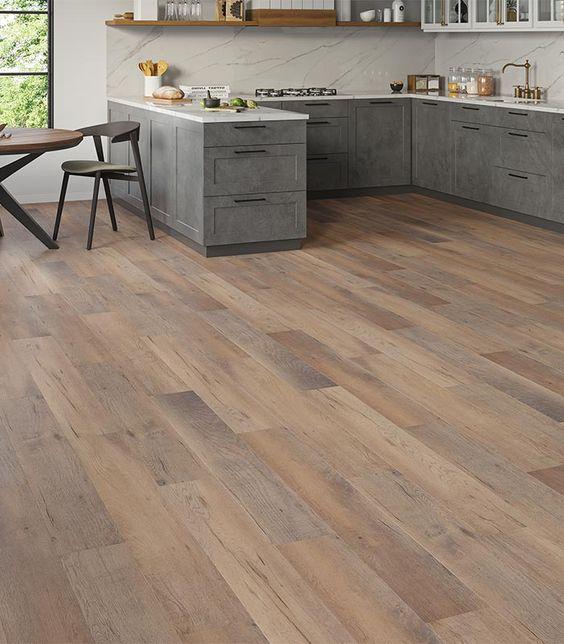
Advantages of SPC Flooring
SPC flooring offers numerous advantages that cater specifically to the needs of Indian homeowners. One of its standout features is water resistance, making it an ideal choice for areas prone to moisture such as kitchens and bathrooms. Unlike traditional wood or laminate floors that can warp or swell when exposed to water, SPC maintains its integrity even in humid conditions.
Another significant advantage is durability. The dense core structure provides excellent resistance against scratches, dents, and impacts from heavy furniture or foot traffic. This makes it suitable not only for residential use but also for commercial environments where high durability is essential.
Ease of installation is another compelling benefit; the click-lock mechanism allows homeowners to lay down their flooring quickly without professional help. This DIY-friendly feature appeals especially in urban areas where labor costs can be high.
SPC flooring also requires minimal maintenance regular sweeping and occasional mopping are sufficient to keep it looking new. Its aesthetic versatility allows it to complement various interior styles while offering a modern look that mimics natural materials like wood and stone without the associated upkeep.
Overall, these advantages make SPC flooring a practical choice for Indian consumers looking for a blend of functionality and style.
Also Read: Epoxy Flooring Home Decor and Interior Designing Ideas
Disadvantages of SPC Flooring
While SPC flooring has many benefits, it also comes with some disadvantages that potential buyers should consider before making a purchase. One notable drawback is its scratch resistance; although SPC is generally durable, it can still be scratched by sharp objects or heavy impacts from furniture. Homeowners need to be cautious about dragging items across the floor or using abrasive cleaning tools.
Another consideration is the cold surface feel of SPC flooring compared to traditional hardwoods. In cooler climates or during winter months, this can lead to discomfort when walking barefoot on the floor. While area rugs can mitigate this issue, they may not be suitable for every space.
Environmental concerns also arise with SPC flooring due to its PVC content. Some products may emit volatile organic compounds (VOCs) during installation or over time, which could affect indoor air quality. Consumers should seek out low-VOC options if this is a concern.
Finally, while SPC flooring offers good durability, it does not have the same resale value as natural materials like hardwood floors. Homebuyers may prefer authentic wood finishes over synthetic alternatives when evaluating property value.
These disadvantages highlight the importance of considering individual needs and preferences when selecting flooring materials.
Features of SPC Flooring
SPC flooring is characterised by several key features that enhance its functionality and appeal in various settings. One of its most important attributes is its multi-layer construction, which typically consists of four layers: a backing layer for stability, a rigid core layer made from stone plastic composite for durability and waterproofing, a printed vinyl layer that provides realistic aesthetics resembling wood or stone, and a wear layer that protects against scratches and stains.
The thickness of SPC flooring usually ranges from 3mm to 8mm; thicker options provide better comfort underfoot and improved sound insulation properties. Many manufacturers offer products with added acoustic backing designed specifically for noise reduction in high-traffic areas like offices or schools.
Another notable feature is slip resistance; many SPC products come with textured surfaces that enhance grip underfoot, making them suitable for wet environments such as bathrooms or kitchens where slips could pose safety risks.
Additionally, SPC flooring's ease of customization allows homeowners to choose from an extensive range of designs, thanks to advanced digital printing technology which enabls them to achieve their desired aesthetic without compromising on performance characteristics.
These features collectively make SPC flooring an attractive option for diverse applications in both residential and commercial spaces across India.
Also Read: From Classic to Contemporary: Exploring Floor Tile Trends for Modern Homes
Types of SPC Flooring
SPC flooring is available in several formats, each designed to cater to different aesthetic preferences and functional requirements. Below is an expanded overview of the main types of SPC flooring:
SPC Plank Flooring
SPC plank flooring is designed to mimic traditional hardwood planks, providing a natural appearance that appeals to many homeowners. Typically available in widths ranging from 5 to 7 inches, these planks offer a realistic wood-like look while being significantly more durable and water-resistant than real wood. The installation process is straightforward, thanks to the click-lock system that allows the planks to snap together easily without the need for adhesives or nails.
This ease of installation makes SPC plank flooring a popular choice for DIY projects. Additionally, the variety of finishes and colors available means that homeowners can achieve their desired aesthetic without compromising on performance. The durability of SPC planks ensures they can withstand high foot traffic, making them suitable for both residential and commercial spaces.
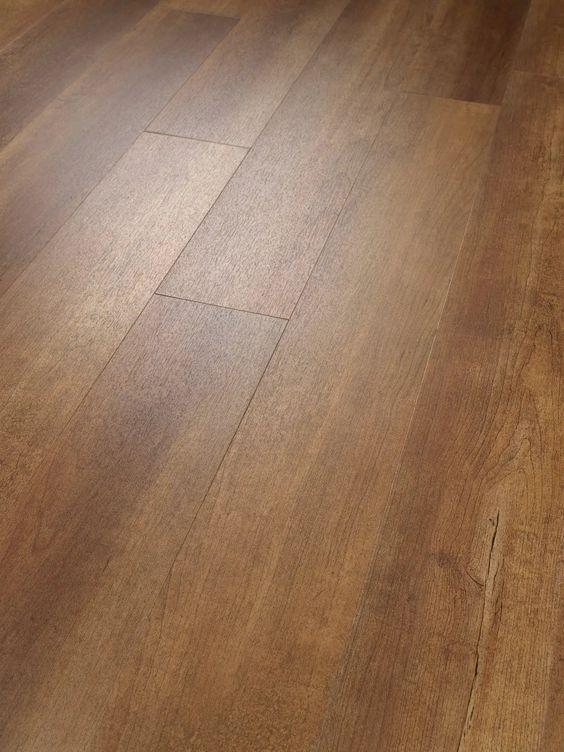 SPC Plank Flooring, Pinterest
SPC Plank Flooring, Pinterest
SPC Tile Flooring
SPC tile flooring resembles traditional ceramic tiles but is made from PVC material, offering a unique blend of aesthetics and practicality. These tiles are ideal for creating intricate designs or patterns on floors while maintaining excellent water resistance.
The click-lock installation method also applies to SPC tiles, allowing for quick and easy setup without specialised tools. This type of flooring is particularly advantageous in areas like kitchens and bathrooms where moisture is prevalent, as it prevents warping or damage from spills. The variety of tile sizes and designs available allows homeowners to customize their spaces effectively, achieving looks that range from classic to contemporary.
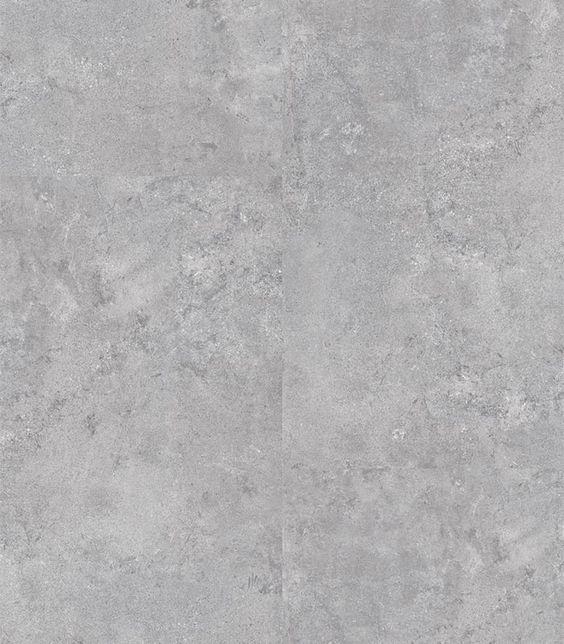 SPC Tile Flooring, Pinterest
SPC Tile Flooring, Pinterest
SPC Sheet Flooring
SPC sheet flooring comes in large sheets rather than individual planks or tiles, which minimises seams between pieces. This feature significantly reduces the risk of water infiltration, making it an excellent choice for areas prone to moisture. The seamless design also contributes to a cleaner aesthetic, as there are fewer visible joints compared to plank or tile options. Installation is typically straightforward; however, it may require more precision during cutting and fitting than other formats. SPC sheet flooring is ideal for commercial applications such as hospitals or schools where hygiene and ease of maintenance are priorities.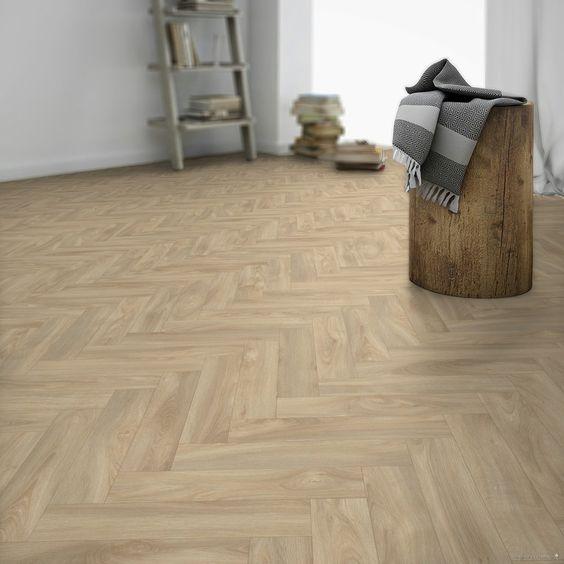 SPC Sheet Flooring, Pinterest
SPC Sheet Flooring, Pinterest
Luxury Vinyl Plank (LVP)
Luxury Vinyl Plank (LVP) is a premium variant of SPC flooring characterized by thicker wear layers (up to 0.5mm) designed for enhanced durability in high-traffic areas. LVP offers superior aesthetics compared to standard options, often featuring advanced printing techniques that closely replicate the look of natural wood or stone. The thicker wear layer not only provides added protection against scratches and dents but also contributes to a more comfortable underfoot experience.
LVP is particularly suitable for residential spaces where both style and durability are essential, making it a popular choice among homeowners looking for luxury at an affordable price.
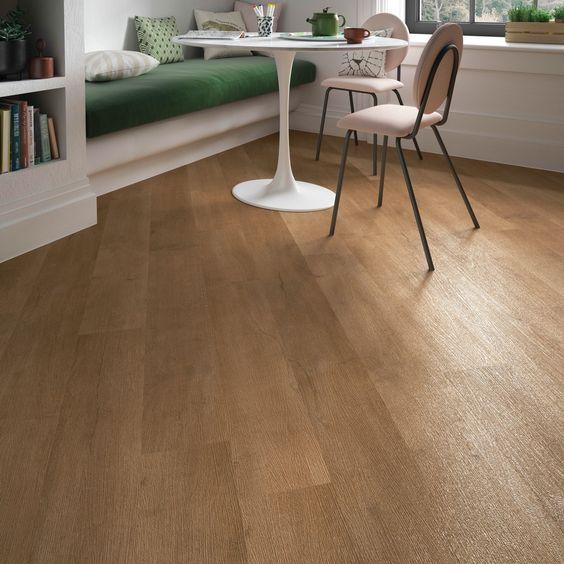 Luxury Vinyl Plank SPC Flooring, Pinterest
Luxury Vinyl Plank SPC Flooring, Pinterest
Also Read: Laminate Flooring: A Versatile and Cost-Effective Solution for Homes
Heavy-Duty SPC Flooring
Heavy-duty SPC flooring is specifically designed for commercial applications where heavy foot traffic occurs. This type typically features reinforced layers that enhance strength and durability against wear and tear. Heavy-duty SPC is ideal for environments such as retail spaces, offices, and public buildings where resilience is critical. Its robust construction ensures it can withstand the rigors of daily use while maintaining its appearance over time. Additionally, this type often includes enhanced sound insulation properties, making it suitable for multi-story buildings or areas where noise reduction is necessary.
In summary, the various types of SPC flooring cater to different needs and preferences while providing the benefits of durability, water resistance, and easy maintenance. Homeowners can choose the format that best suits their lifestyle and design vision while enjoying the long-lasting performance that SPC flooring offers.
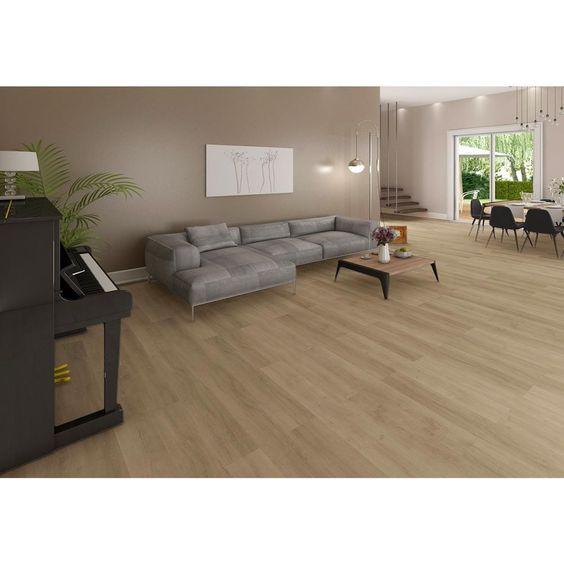
How is SPC Flooring Different From WPC Flooring
The main differences between SPC (Stone Plastic Composite) and WPC (Wood Plastic Composite) flooring in terms of installation are rooted in their core compositions, structural characteristics, and the installation methods utilised.
Core Composition and Structure
SPC flooring features a rigid core made primarily from limestone powder and PVC, which contributes to its durability and stability. This core is denser and thinner compared to WPC, resulting in a more robust product that can withstand heavy foot traffic and impacts. Conversely, WPC flooring has a thicker core that combines wood products with PVC and includes a foaming agent. This makes WPC softer underfoot, providing more cushioning but also making it less rigid than SPC.
Installation Method
Both SPC and WPC flooring typically utilize a click-lock installation system, which allows for easy DIY installation without the need for adhesives or nails. However, because SPC is denser and heavier, it may require more effort to handle during installation compared to the lighter WPC. The rigid nature of SPC allows it to be installed over slightly uneven surfaces without significant issues, as its stability helps conceal minor imperfections in the subfloor. In contrast, while WPC can also be installed over existing floors, its softer nature might necessitate a more level subfloor to avoid potential issues like warping or buckling over time.
Subfloor Preparation
Both types of flooring do not require extensive subfloor preparation; however, the installation of SPC may be slightly more forgiving regarding minor imperfections due to its rigidity. In contrast, WPC might perform better on a perfectly flat surface to ensure optimal comfort and longevity.
In summary, while both SPC and WPC flooring offer easy installation with click-lock systems, their core compositions lead to different handling characteristics. SPC's denser core provides superior durability and stability during installation, whereas WPC offers enhanced comfort underfoot due to its cushioning properties. The choice between the two may depend on specific project requirements such as comfort preferences, expected foot traffic levels, and subfloor conditions.
Maintenance of SPC Flooring
Maintaining SPC flooring is straightforward due to its durable nature and resistance to stains and moisture. Regular upkeep involves simple tasks that help preserve its appearance over time:
Regular Cleaning: Sweep or vacuum frequently to remove dust and debris that can scratch the surface if left unattended. Use a soft-bristle broom or vacuum with a hard floor attachment.
Mopping: Occasionally mop with a damp cloth or mop using warm water mixed with mild detergent specifically formulated for vinyl floors. Avoid using harsh chemicals or abrasive cleaners as they can damage the wear layer.
Preventive Measures: Place doormats at entryways to minimise dirt accumulation indoors; use felt pads under furniture legs to prevent scratches when moving items around.
Address Spills Promptly: Clean up spills immediately using a soft cloth; since SPC is waterproof, most liquids will not penetrate but prompt action helps prevent staining.
Avoid Excessive Water: While SPC is waterproof, avoid soaking it with excessive water during cleaning as standing water can seep into seams over time if not properly managed.
By following these maintenance tips regularly, homeowners can ensure their SPC floors remain attractive and functional throughout their lifespan while enjoying all the benefits this innovative flooring solution offers.
Conclusion
SPC flooring represents a versatile and practical choice for homeowners and builders in India seeking a durable and aesthetically pleasing flooring solution. With its robust construction, including a rigid core made from limestone and PVC, SPC flooring offers exceptional water resistance and durability, making it suitable for various environments, from residential spaces to high-traffic commercial areas. The variety of formats available such as planks, tiles, sheets, luxury vinyl planks, and heavy-duty options ensures that consumers can find the perfect fit for their specific design preferences and functional needs.
While SPC flooring boasts numerous advantages like easy installation and low maintenance requirements, it is essential to consider potential drawbacks such as scratch susceptibility and environmental concerns related to PVC. By understanding these factors and following proper maintenance practices, homeowners can enjoy the long-lasting beauty and performance of SPC flooring.
Ultimately, whether you are renovating your home or constructing a new space, SPC flooring stands out as a reliable option that combines style with practicality, making it a favored choice among Indian consumers looking for modern flooring solutions.
explore further
Latest from Contemporary ideas
More from Innovations
Resources
Dwello, for every home buyer, is a way to go from 'I feel' to 'I know', at no extra cost.



